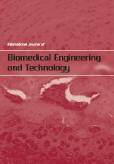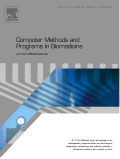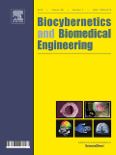
AIMS Bioengineering
Scope & Guideline
Innovating Solutions Through Interdisciplinary Research
Introduction
Aims and Scopes
- Biocatalysis and Biomaterials:
Research on the utilization of biological catalysts and the development of new biomaterials for various applications, including construction (e.g., self-healing concrete) and medical devices. - Computational Modeling and Simulation:
Focus on computational approaches to model biological systems, disease dynamics, and treatment efficacy, enhancing predictive capabilities in healthcare and engineering. - Biomedical Engineering Innovations:
Exploration of cutting-edge technologies in biomedical engineering, including brain-computer interfaces, tissue engineering, and advanced imaging techniques. - Artificial Intelligence in Healthcare:
Integration of artificial intelligence and machine learning methodologies to improve diagnostics, treatment planning, and patient outcomes in various medical fields. - Environmental Biotechnology:
Research on the use of biotechnological solutions to address environmental challenges, including resource recovery, pollution treatment, and sustainable practices.
Trending and Emerging
- Artificial Intelligence and Machine Learning:
A significant increase in studies utilizing AI and machine learning methodologies, particularly for predictive modeling and diagnostics in healthcare, showcasing the transformative potential of these technologies. - Advanced Biomaterials and Regenerative Medicine:
Emerging research on novel biomaterials for tissue engineering and regenerative medicine, reflecting a growing interest in developing materials that enhance healing and integration within biological systems. - Sustainable Biotechnology Practices:
A trend towards sustainability in biotechnology, focusing on eco-friendly processes and materials, including biocatalysis and waste valorization, aligning with global environmental goals. - Neuroscience and Brain-Computer Interfaces:
Growing attention on neuroscience applications, particularly brain-computer interfaces, which leverage advanced signal processing techniques to improve patient outcomes in neurological disorders. - Epidemiological Modeling and Public Health:
An increasing focus on mathematical and computational models to address public health challenges, including infectious disease dynamics and healthcare strategies, particularly in the context of recent global pandemics.
Declining or Waning
- Traditional Microbial Applications:
Research on conventional microbial applications, such as fermentation processes for food production, has seen a decline, possibly due to the rise of more advanced biotechnological methods. - Basic Mechanistic Studies:
There is a decreasing emphasis on purely mechanistic studies without practical applications, as the journal increasingly favors research with direct implications for health and technology. - Single-Discipline Focus:
Papers focusing solely on a single discipline without interdisciplinary approaches are becoming less common, as the journal encourages integration across biology, engineering, and technology.
Similar Journals

International Journal of Biomedical Engineering and Technology
Innovating Solutions for Enhanced Patient CareThe International Journal of Biomedical Engineering and Technology, published by INDERSCIENCE ENTERPRISES LTD, serves as a pivotal platform for the dissemination of innovative research in the field of biomedical engineering. This journal, with ISSN 1752-6418 and E-ISSN 1752-6426, has been a valuable resource since its inception in 2007, boasting a converged publication timeline extending to 2024. Based in the United Kingdom, the journal aims to bridge the gap between engineering and biomedical sciences, facilitating interdisciplinary collaboration. As reflected in its 2023 Scopus ranking in the Q4 quartile of Biomedical Engineering, the journal remains accessible for researchers at various stages of their careers, contributing to its significance in promoting advancements in healthcare technologies. While currently not an open-access publication, the journal remains dedicated to enriching the biomedical engineering community by presenting novel research that addresses critical challenges, ultimately aiming to improve patient outcomes and drive innovation in medical devices and therapies.

Biomolecules and Biomedicine
Innovating Insights in Biomedical ResearchBiomolecules and Biomedicine is a pioneering open-access journal dedicated to advancing the fields of molecular biology and biomedical sciences, published by the Association of Basic Medical Science Federation Bosnia & Herzegovina in Sarajevo. With the ISSN 2831-0896 and the E-ISSN 2831-090X, this journal aims to facilitate the dissemination of high-quality research from 2023 onwards, inviting submissions that provide innovative insights and findings across various facets of medicine and biological sciences. Positioned within the General Medicine and Biochemistry, Genetics and Molecular Biology categories, it currently holds rankings of 332 out of 636 and 173 out of 221 respectively, highlighting its emerging influence in these fields. As an open-access journal, it ensures that all published research is freely accessible to a global audience, fostering collaboration and knowledge exchange among researchers, professionals, and students alike. With a commitment to enhancing scientific discourse and promoting cutting-edge research, Biomolecules and Biomedicine is poised to become a vital resource for those dedicated to unraveling the complexities of biomolecules and their roles in health and disease.

Advanced Biomedical Engineering
Fostering collaboration across biomedical frontiers.Advanced Biomedical Engineering is a peer-reviewed open access journal published by the Japanese Society for Medical & Biological Engineering, dedicated to disseminating high-quality research in the multidisciplinary fields of biomedical engineering. Boasting an ISSN of 2187-5219, this journal has been pivotal since its inception in 2018, especially as it embraces the open access model to foster knowledge sharing and wide accessibility. Centered in Tokyo, Japan, it serves as a vital platform for scholars and practitioners across various domains, such as biomaterials, biomedical engineering, and biotechnology. Despite currently residing in the Q4 quartile across several categories, including those in biotechnology and computer science applications, the journal is committed to elevating its academic impact and reputation, aiming for improved rankings in Scopus and other databases. Researchers and professionals are encouraged to contribute their innovative findings, discussions, and case studies, facilitating the advancement of this dynamic field.

Computer Methods and Programs in Biomedicine
Bridging the Gap between Technology and Medicine for Better Outcomes.Computer Methods and Programs in Biomedicine, published by ELSEVIER IRELAND LTD, is a leading journal at the intersection of computer science and biomedical research. With an impressive impact factor evidenced by its Q1 rankings in multiple categories—Computer Science Applications, Health Informatics, and Software—this journal ranks highly among peer publications, showcasing its significance in advancing interdisciplinary research. Covering a wide array of topics since its inception in 1985, it is particularly crucial for those invested in the innovation of computational methods applied to the biomedical field. The journal has established a strong reputation, with Scopus rankings placing it in the top percentiles across its relevant sectors, including the 14th position out of 138 in Health Informatics. Researchers, practitioners, and students looking to explore current trends, methodologies, and advancements in biomedical applications of computer science will find this journal an invaluable resource.

Progress in Biomedical Engineering
To connect engineering excellence with medical advancements.Progress in Biomedical Engineering, published by IOP Publishing Ltd, is a premier open-access journal that serves as a vital platform for the dissemination of innovative research in the field of biomedical engineering. With an impressive Q1 classification in the Biomedical Engineering category for 2023, this journal has established itself as a significant contributor to the advancement of engineering solutions that improve healthcare outcomes. Recognized for its high-quality and impactful publications, it ranks 51st out of 303 in its field on Scopus, placing it in the 83rd percentile. The journal aims to foster interdisciplinary collaboration and introduce pioneering methodologies and technologies that bridge the gap between engineering and medicine. By providing a pathway for rapid communication of fundamental and applied research, Progress in Biomedical Engineering is dedicated to shaping the future of healthcare technology. Access to its content ensures that researchers, professionals, and students remain at the forefront of biomedical innovation.

BIOTECHNOLOGY AND BIOENGINEERING
Bridging Knowledge and Innovation in BioengineeringBIOTECHNOLOGY AND BIOENGINEERING, published by Wiley, is a leading journal in the domains of applied microbiology, biotechnology, and bioengineering. With an ISSN of 0006-3592 and E-ISSN of 1097-0290, this journal has established itself as an essential resource for researchers, professionals, and students aiming to advance their knowledge and stay updated on cutting-edge innovations and methodologies in biotechnology. The journal has a commendable impact factor, and it is ranked in the second quartile (Q2) across multiple categories for 2023. This positions it favorably among its peers, underscoring its significance in the scientific community; for example, it ranks 23rd out of 127 in the field of Applied Microbiology and Biotechnology. As a hub of critical research findings and technological advancements, BIOTECHNOLOGY AND BIOENGINEERING invites contributions that push the boundaries of biotechnological applications, fostering a deeper understanding and development of sustainable solutions to current global challenges.

NATURE BIOTECHNOLOGY
Leading the Charge in Biotechnological ExcellenceNATURE BIOTECHNOLOGY, an esteemed journal published by NATURE PORTFOLIO, stands at the forefront of innovation in biotechnological research since its inception in 1989. With an impressive impact factor reflecting its preeminent status—ranked in the Q1 quartile across multiple categories including Applied Microbiology, Bioengineering, Biomedical Engineering, Biotechnology, and Molecular Medicine—this journal is a pivotal resource for researchers and professionals aiming to advance the boundaries of biotechnology. The journal is highly regarded, boasting Scopus rankings in the 99th percentile within its categories. NATURE BIOTECHNOLOGY provides a platform for disseminating cutting-edge findings, with open access options that enhance the visibility and accessibility of its content to a global audience. The scope of the journal encapsulates a diverse range of topics from genetic engineering to pharmaceutical developments, ensuring comprehensive coverage of emerging biotechnological advances. As the field continues to evolve, NATURE BIOTECHNOLOGY remains committed to publishing groundbreaking research that shapes the future of science and industry.

Network Modeling and Analysis in Health Informatics and Bioinformatics
Advancing methodologies for better health outcomes.Network Modeling and Analysis in Health Informatics and Bioinformatics, published by SPRINGER WIEN, stands as a vital resource in the interdisciplinary domains of health informatics and bioinformatics. With an ISSN of 2192-6662 and E-ISSN of 2192-6670, this journal aims to facilitate the dissemination of innovative research that intersects network modeling, data analysis, and health applications. The journal competes at a Q3 quartile level across multiple categories including Biomedical Engineering and Health Informatics, showcasing its growing influence within the academic community. As of 2023, it holds impressive Scopus rankings, including a 20th position in Urology, illustrating its significance in the field. Although not an open access publication, the journal is dedicated to providing cutting-edge insights from 2012 to 2024 and is poised to attract researchers, professionals, and students striving to push the boundaries of knowledge in health informatics and bioinformatics. This journal is not just a platform for sharing scholarly articles; it is a catalyst for advancing methodologies that enhance patient care and medical research.

Journal of Biological Engineering
Innovating Solutions for a Sustainable FutureJournal of Biological Engineering, published by BMC, stands as a prominent Open Access journal since 2007, dedicated to advancing the interdisciplinary field of biological engineering. With an ISSN of 1754-1611, this UK-based journal aims to provide a platform for researchers and professionals to disseminate innovative and impactful research across various domains including Biomedical Engineering, Environmental Engineering, Cell Biology, and Molecular Biology. The journal's notable rankings in the 2023 category quartiles exemplify its position within the scientific community, featuring Q2 status in Biomedical Engineering and Environmental Engineering, along with Q3 in Cell Biology and Q2 in Molecular Biology. By maintaining robust Scopus rankings and ensuring free access to cutting-edge research, the Journal of Biological Engineering plays a crucial role in driving discovery and collaboration among scholars, thereby enriching both the academic landscape and applied sciences.

Biocybernetics and Biomedical Engineering
Innovating for Better Patient OutcomesBiocybernetics and Biomedical Engineering, published by ELSEVIER in the Netherlands, is a prestigious journal that stands at the forefront of the intersecting fields of biomedical engineering and artificial intelligence. With an impressive Impact Factor that places it in the Q1 category for Biomedical Engineering, this journal not only ranks 17th out of 303 in Scopus but also boasts a remarkable percentile ranking of 94th, highlighting its influence and relevance within the scientific community. Since its inception in 2008, Biocybernetics and Biomedical Engineering has aimed to publish cutting-edge research that integrates principles of cybernetics with technological advancements in health care, thereby fostering innovations that improve patient outcomes. Dedicated to advancing knowledge in biomedical technology, the journal serves as a vital resource for researchers, professionals, and students seeking to explore the latest developments and methodologies in the field.